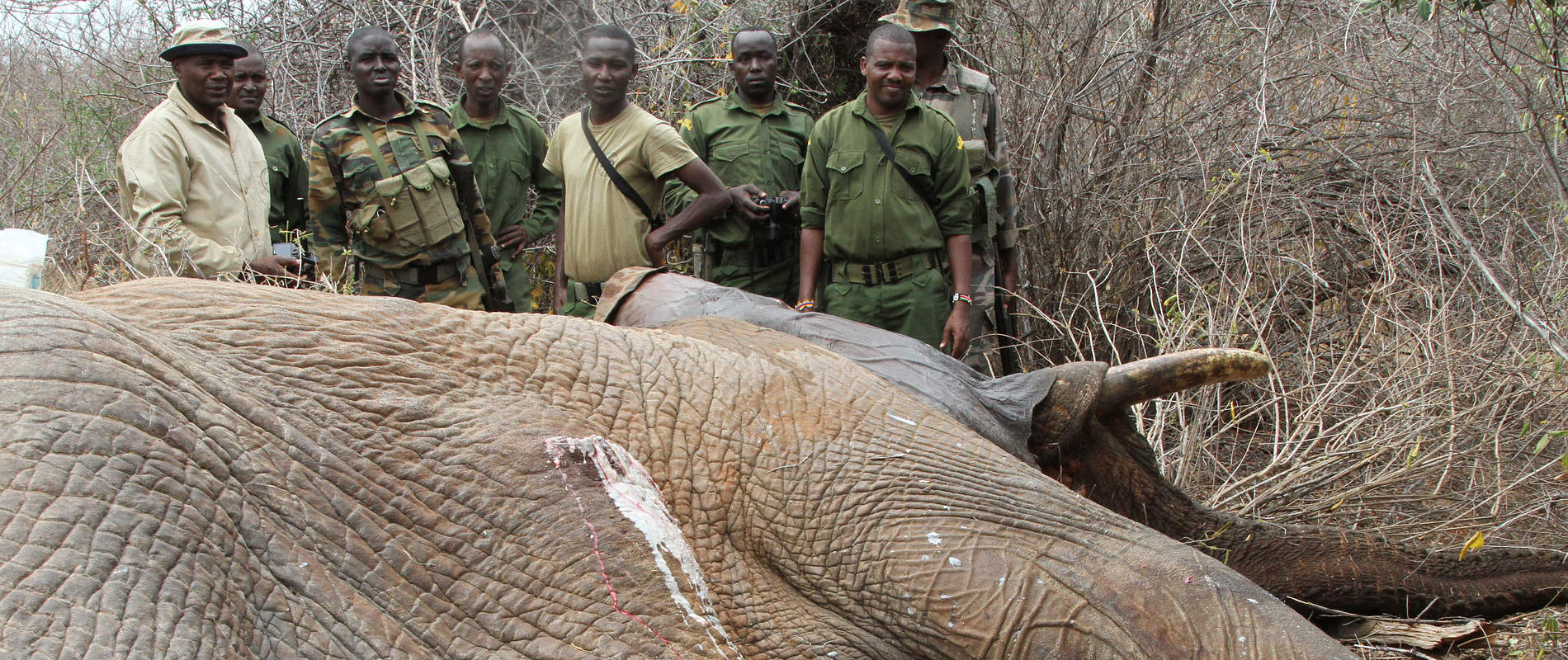Over the years, a number of injured wild elephants have appeared at our stockades seeking help. This is a deeply humbling experience; while the majority of them were harmed by the human hand, they can still distinguish that we are a safe haven, there to offer a lifeline when they need it most.
Such was the case on the morning of Saturday, July 10th, when a handsome wild bull showed up at our Ithumba Reintegration Unit. He was sporting a poisoned arrow wound that, judging by its deeply septic state was several weeks old.
Ithumba Head Keeper Benjamin immediately called our Kaluku operations room so a treatment could be organised. While our fixed-wing pilot flew to Voi to collect KWS veterinarian Dr. Poghon and his crew, ground teams monitored the bull’s position. By the time the vet team arrived at Ithumba, he was moving through thick bush, but we were prepared for this turn of events. Our helicopter was poised for takeoff, so Dr. Poghon could dart the patient from the air.

He had a heavily infected wound to his side with rotten flesh hanging from the abscess

Heavily infected poisoned arrow wound
However, the elephant remained strong and it took quite some time for him to succumb to the anaesthetic. As it finally began to take effect, the helicopter tried to coax him into an open area that would be more conducive to treatment. Of course, in working with wildlife, things don’t always go according to plan, and the bull was determined to do the opposite of what was being asked of him and instead forged deeper into the bush. After ten minutes, he finally slumped to the ground — still amidst heavy vegetation, but luckily with his wound facing up.
The team got to work on the septic injury, removing necrotic flesh and draining copious amounts of pus from the wound. We can only imagine how much discomfort he must have been in — and, had this injury gone untreated, it would have certainly turned life-threatening. Fortunately, he showed up at our stockades before mortal damage was done and Dr. Poghon expects him to make a full recovery.

The necrotic flesh was removed to aid healing

The wound was thoroughly cleaned, with antibiotics and anti-inflammatories administered.
While we monitor the patient’s healing progress, the rest of our field teams together with KWS are working hard to ascertain where he was targeted and arrest those responsible for his injury. We are carrying out intensive aerial surveillance of the area, and the Anti-Poaching Teams and Canine Unit are already tracking down potential leads.

Dr Poghon darted the bull form the air

He fell on the wrong side so needed to be rolled in order to access the two wound sites
As it turned out, that was only the beginning of the weekend’s lifesaving treatments. The next day, our SWT/KWS Tsavo Mobile Vet Unit was called to the Chyulus by Big Life to attend to a speared bull. He had two grave injuries, one on his leg and the other on his abdomen. Our fixed-wing pilot again flew to Voi to collect Dr Poghon and his team, while our helicopter flew directly to the scene. Everyone convened at Ol Donyo on the slopes of the Chyulus, where the bull was drinking from the lodge’s waterhole.

Once flipped the team could begin their work

His injuries being attended to, fortunately neither life threatening
Dr Poghon boarded the helicopter, so he could dart the bull from the air. This time, the patient cooperated by remaining in open ground while the anaesthetic took effect. However, he fell on the wrong side, inhibiting access to the wounds. Our ground team moved in, putting straps around the bull and gently rolling him over.
From there, treatment was straightforward. Dr Poghon thoroughly cleaned out both wounds before administering anti-inflammatories and antibiotics. Mercifully, the injuries weren’t terribly deep and hadn’t yet reached a state of advanced septicity, so he is expected to make a full recovery. Thanks to the quick and coordinated action of our teams, both these bulls will hopefully continue to preside over the Greater Tsavo Conservation Area for decades to come.

After treatment the bull rose to his feet and ambled away
